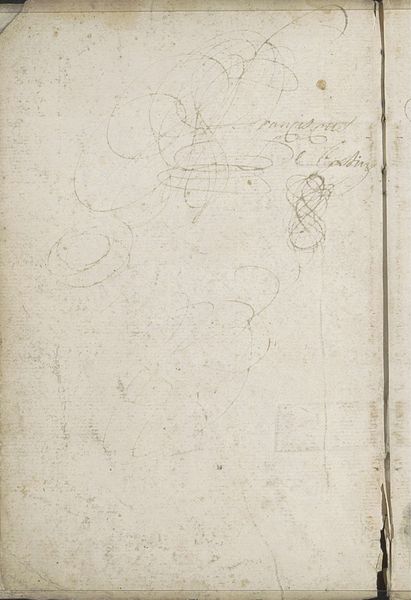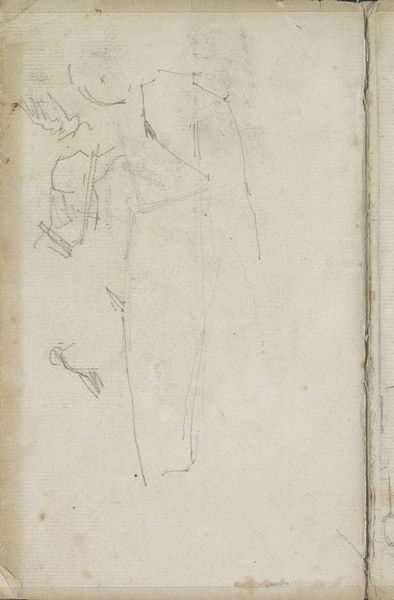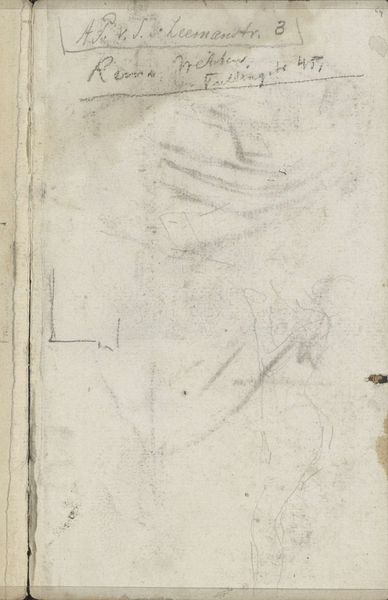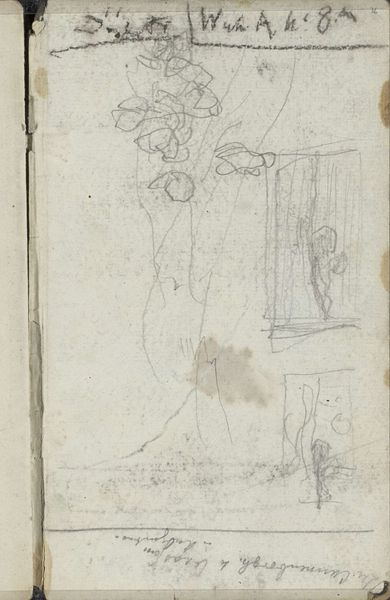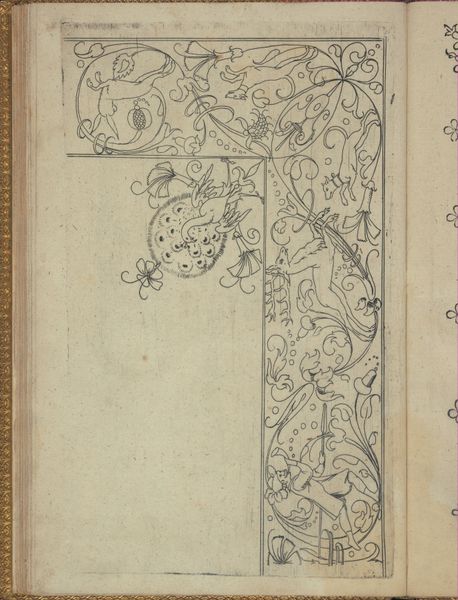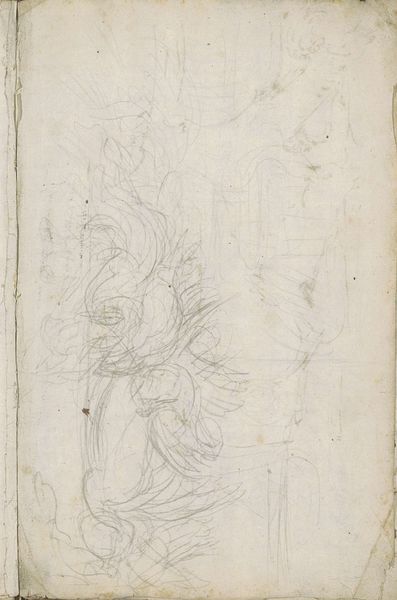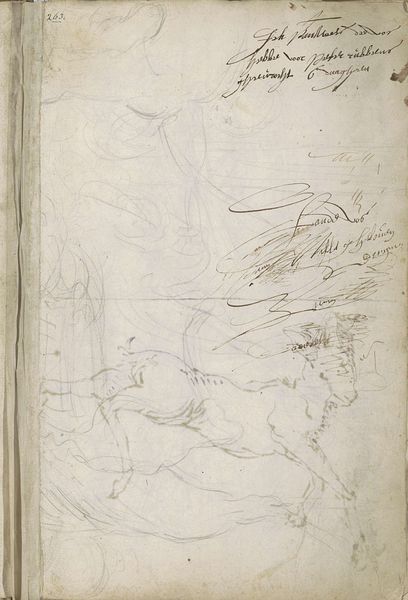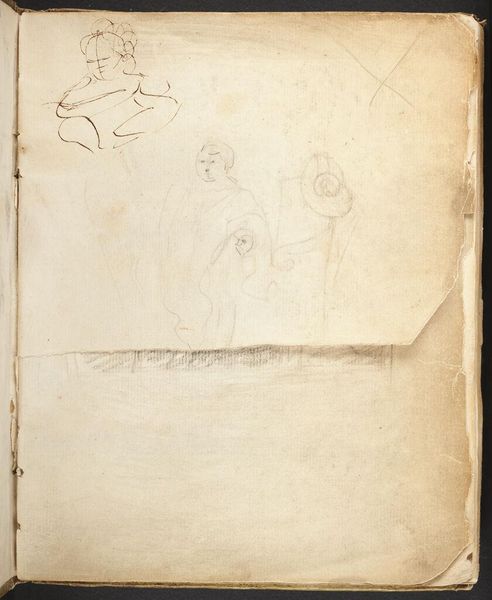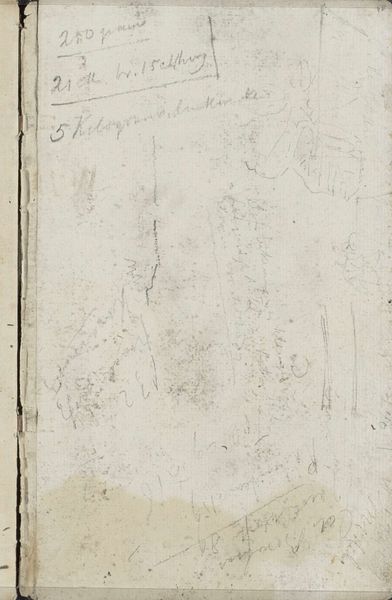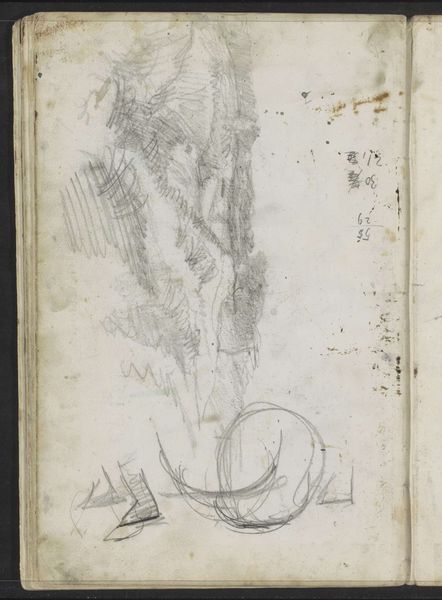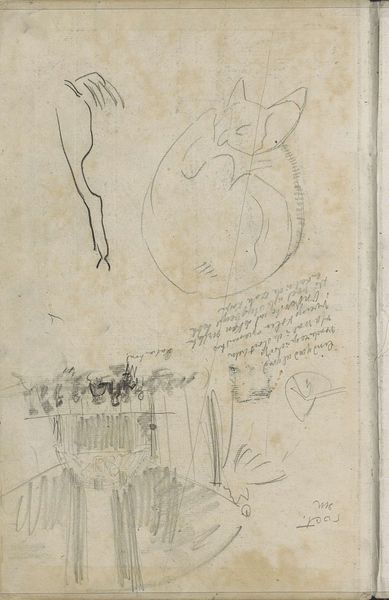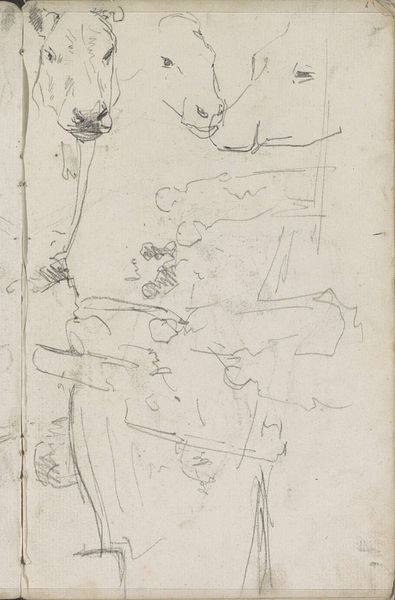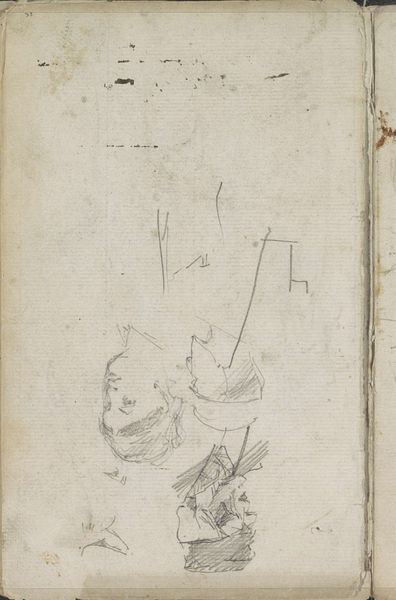
drawing, paper, pencil
#
drawing
#
baroque
#
pencil sketch
#
paper
#
pencil
#
genre-painting
Copyright: Rijks Museum: Open Domain
Curator: Oh, my, it looks like someone spilled their soul onto a page... there's such rawness to the sketch, it feels as though it just barely survived being tossed out. Editor: Here we have a sketch, probably dating from the 17th century and attributed to Paul de Vos, titled "Study Sheet with Still Lifes, a Vase, and a Dead Deer.” It is a pencil drawing on paper. Curator: Right. A dead deer. It’s positioned upside down, like a discarded trophy from a dream… or a nightmare. And there’s something so immediate in the hurried pencil strokes. Are those flowers? There's such a contrast in delicacy versus brutality, its startling. Editor: Considering that De Vos came from a family of artists, with a particular specialism in animal paintings for the Baroque aristocracy, its clear he aimed to capture realism. These drawings are preparatory studies to achieve anatomical precision, perhaps for larger commissions that often ended as trophies displayed on aristocratic estates. Curator: Precisely, yet look at the vulnerability! Those thin limbs, that drooping neck, not remotely glorious. It's more intimate than triumphant. You'd think such a prominent animalier of his time, sought-after as he was, would display the hunt differently. Editor: Well, his works were commodities within a system, reflections of status and power for both artist and patrons. The deer represents the hunt’s yield, evidence of human control over nature to reinforce the Baroque worldview. His preliminary sketches had to fulfill their goal, and still achieve visual effectiveness that pleases patrons and is admired by viewers. Curator: All true. Yet I cannot shake the feeling looking at it: it could be simply the quiet contemplation on mortality. De Vos just decided to note things and, yes, capture this very sad death; like noticing and preserving that very moment forever. Its such a different statement when extracted from the hunting scene and is isolated to represent a moment of pause and respect. Editor: I appreciate the point that you make about mortality. Still, for contemporary society where animal welfare occupies our moral and political thinking, we are bound to reconsider traditional imagery. De Vos’ sketch encapsulates not just a dead animal, but the living power dynamics between art, patrons, and audience. Curator: Oh, certainly. It's amazing, isn't it, how a few swift lines can echo so many centuries. Editor: Indeed; thank you for the company today. I'll move on and reflect more later.
Comments
No comments
Be the first to comment and join the conversation on the ultimate creative platform.
